It has taken 14 long years for The Devil’s Whore - Peter Flannery and Martine Brant’s drama set amid the turbulence and slaughter of the English Civil War - to reach the screen. That’s the Peter Flannery who wrote Our Friends in the North, the story of four friends from Newcastle, which, along the way, told viewers all they needed to know about British politics from the early 1960s to the mid-1990s.
Audiences and critics loved it and the BBC2 serial was garlanded with awards, including two Baftas and two Royal Television Society awards. Yet, aside from occasional episodes of detective series George Gently, Poirot and Rose and Maloney, Flannery has had nothing on TV since Our Friends in the North in 1996.
A long time in the making
The story of The Devil’s Whore, which kicks off on Channel 4 on 19 November, began in autumn 1994 when Flannery took a call from Tessa Ross, who was then working in independent commissioning at the BBC. She asked him to take look at an idea for a drama from Brant, a historian specialising in 17th-century England.
“We were starting to film Our Friends in the North at the time. I loved the idea, we set up a meeting and I met Martine. From that point onwards, I just couldn’t say no. It seems very funny in retrospect but I told [the BBC]: ‘You might have to wait six months’. Fourteen years later…” says Flannery, leaving his sentence hanging.
“The whole thing fell apart for all sorts of complicated reasons, but mainly because the BBC never quite knew what it wanted,” he recalls. “In the meantime Martine and I became friends, but never stopped talking or dreaming about it.”
A decade later, Ross (who was by then head of drama and film at C4) and Flannery approached Company Pictures managing director George Faber. “Peter was prepared to grasp the nettle and turn what was [originally meant to be] 10 BBC hours into four commercial hours,” says Faber, who worked with Flannery on Our Friends in the North and, more recently, on BBC1 period cop show George Gently.
Flannery’s script, adds Faber, reveals “a remarkable piece of little-known English history. It was the first great revolution and inspired the American War of Independence and the French Revolution and yet it’s not dramatised like Henry VIII, Elizabeth I or Victoria, all of whom are done with astonishing frequency.”
Brant’s original idea told the story of Angelica Fanshawe, the “Devil’s Whore” of the title. “She is a noblewoman who turns highwaywoman, becomes radicalised and takes up the republican cause,” she explains. The character is fictional, but her surname is not. Lady Anne Fanshawe, an ancestor of Brant’s husband, was part of the king’s court in Oxford during the Civil War.
Andrea Riseborough, who appeared as another formidable woman, Margaret Thatcher, in BBC4’s The Long Walk to Finchley, plays Angelica Fanshawe. “It’s a brilliant role,” she says. “She’s a woman ahead of her time, in the sense that she’s unapologetically brave and sexual and forward thinking. That’s not to say that women like that did not exist back then, because of course they do in every era, but it’s whether they’re defeated by the constraints of society, and go below the radar, or whether they prevail.”
When Flannery began writing the script, The Devil’s Whore grew in scope. The four-part serial gives voice to the key characters of the Civil War - Oliver Cromwell, Charles I and Thomas Rainsborough - and other lesser figures such as the political firebrand John Lilburne and the soldier Edward Sexby. Brant admits that she and Flannery “have taken massive liberties” with the lives of these people, but adds:
“This is not a documentary or even a drama-documentary; it is a piece of historical fiction.”
“Martine had envisaged a chamber piece,” says Flannery. “It wasn’t the history of the Civil War. It was really about a character living in the king’s court during the day and riding with the wild men in the woods at night. I turned it into the story of the English Civil War. I’ve made it a political as well as a personal piece.”
The pair worked well together, visiting the battlefields and locations of the Civil War. Flannery had collaborated with other writers in the past, but not entirely successfully: “I’d elbow them out of the way and make [the drama] mine. That wasn’t necessary with Martine because she has a really profound understanding of drama, character and structure and, of course, she has all the history at her fingertips. She’s been the best collaborator I’ve had.”
New territory for Channel 4
As an epic costume drama, The Devil’s Whore is a departure for C4. Its “event” dramas, such as The Shooting of Thomas Hurndall and The Mark of Cain, although often political in content, tend to be one-off, smaller scale productions. “What makes it different from the main channels’ period drama is that it is very political,” says C4 head of drama Liza Marshall. “The Devil’s Whore isn’t bonnets and carriages; it’s a look at a period of history that nobody knows much about. Some of the ideas bandied around are very extreme. It felt very C4.”
The Devil’s Whore was shot over 11 weeks on a budget of£7m during early summer in South Africa. As ever, money was the reason behind the programme’s location: the production benefited from a government incentive package and from employing substantially cheaper local crew and supporting artists, which Faber reckons added 25% to the quality of the production.
“If you can get substantially higher production values by shooting elsewhere and you can mitigate the creative compromises, then I think it’s a better use of [money] than to scrimp and scrape and end up with a less handsome show shot in the UK,” he says.
Company Pictures has growing expertise in southern Africa: it shoots ITV drama Wild at Heart outside Johannesburg and recently made Generation Kill, a seven-hour series about the invasion of Iraq for HBO, in Namibia. “We pretty much moved the majority of the crew from Generation Kill straight to The Devil’s Whore,” says Faber.
Cape Town shoot
Before shooting began outside Cape Town, director Mark Munden studied films such as Clint Eastwood’s Unforgiven and Sergio Leone’s spaghetti westerns to get a feel for the look of The Devil’s Whore. “I wanted to bring in elements of the modern revisionist western. In terms of its landscape, the piece was very much about isolated areas of civilisation, such as Oxford and London, within a wild lawless country. Sexby is like a mercenary gunslinger, [Leone’s] ‘man with no name’,” he explains.
Munden describes the shoot as “frenzied”, especially when he was filming the battle of Edgehill. “What made it difficult was that there were lots of horses, firearms, extras and special effects. It was a relief to get in a room with two people and do some dialogue scenes,” he says.
But the actors, including John Simm who plays Sexby, loved the action sequences: “The battle scenes and sword fights were great,” says Simm. “If you just ignore the camera that’s on your right, and just look to your left, you’re in the middle of this enormous battle, with cannons going off and horses charging. All of that stuff was the best bit about it, just brilliant.”
Munden shot in HD, albeit grudgingly. “I hate it. It can look great but it’s just a pain. You’re always linked to a monitor and the cameras are huge. I use a lot of zoom lenses and if you’ve got a zoom on an HD camera it’s like a tank. I like to be free to pick up the camera and run with it,” he says.
Apart from the low budget BBC2 drama Shiny Shiny Bright New Hole In My Heart, it’s the first time he has shot on HD. “It’s a cost thing, 16mm film is much more expensive. I can be a bit out of control shooting stock and, if that does happen, it gets very expensive. On HD you’re just using tape and it doesn’t cost any money.”
And does Brant think the long wait to get The Devil’s Whore on screen has been worth it? “I’ve learned so much about the [TV] process, though I’m not sure I’d ever want to do it again,” she says, wryly.
“Historians sit for years in the Bodleian Library in silence, working away on rarefied history that nobody’s very interested in. Suddenly I’ve been able to bring that history to life and that’s such a rare and privileged thing.”
Fact File
| The Devils’s Whore | |
| Broadcaster | Channel 4 |
| Producers | Company Pictures/Power Production |
| Starts | 19 November, 9pm |
| Length | 1 x 75 and 3 x 60-minutes |
| Commissioning editor | Liza Marshall |
| Created and written by | Peter Flannery, Martine Brant |
| Director | Marc Munden |
| Producer | Jake Lushington |
| Executive producers | George Faber, Charles Pattinson |
| Director of photography | Julian Court |
| Production designer | Rob Harris |
| Make-up and hair designer | Nadine Prigge |
| Costume designer | Michele Clapton |
| Principal cast | John Simm, Andrea Riseborough, Dominic West, Michael Fassbender, Peter Capaldi, Tim McInnerny, Maxine Peake |











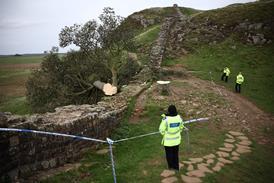
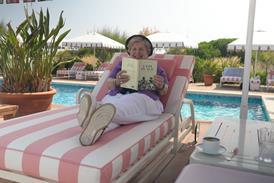

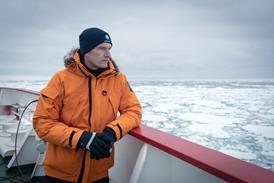



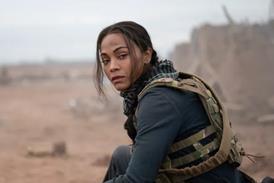

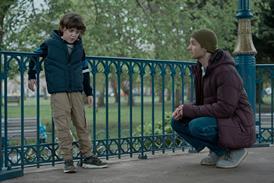





No comments yet